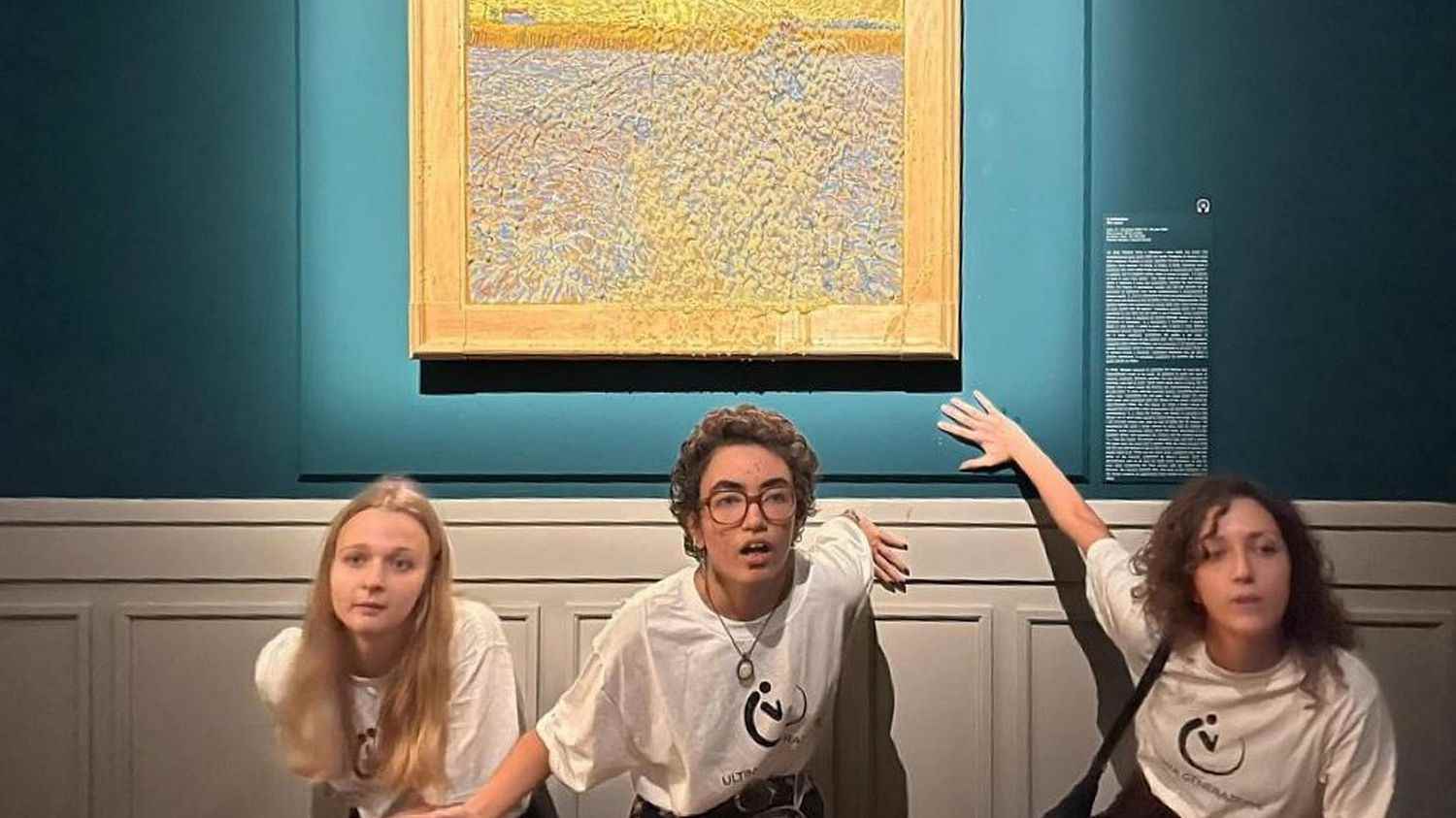Targeting paintings by masters is one of the new weapons used by activists to sound the alarm on climate change, at the risk of steer part of the public. Latest action: two environmental activists stuck their hands on the frames of paintings by Francisco Goya at the Prado Museum in Madrid, Spain, on Saturday November 5th.
The paints referred to, The Naked Maja and The Clothed Maja, which are among the most famous works of the Spanish painter (1746-1828), were not damaged, according to the museum. The two activists, members of the “Futuro Vegetal” collective affiliated with the Extinction Rebellion collective, were arrested by the Spanish police.
The day before, other activists belonging to the climate group “Last generation” (“Last generation” in French) had thrown soup on a Van Gogh protected by a window in Rome, Italy. The Sower, a work dating from 1888 showing a peasant sowing his field with a huge sun in the background, is exhibited as part of an exhibition dedicated to the Dutch painter at the Bonaparte Palace on the Place de Venise. The painting was also not damaged.
Famous paintings have already been targeted in several European cities. At the end of October, two militants of “Last Generation” had spread mashed potatoes on the glass protecting the canvas of Claude Monet Millstones at the Barberini Museum in Potsdam, Germany. Environmental activists also glued themselves to the glass protecting The Girl with a Pearl Earring by Johannes Vermeer in a museum in the Netherlands and others threw soup on the one protecting Vincent van Gogh’s Sunflowers in the National Gallery in London.
Miquel Iceta, thehe Spanish Minister of Culture, considered that the action of the militants of the collective “Futuro Vegetal” was “unjustifiable”. A reaction similar to that of his Italian counterpart. “Attacking art is a despicable act that must be strongly condemned“, castigated the Italian Minister of Culture Gennaro Sangiuliano in a press release following the attack on the Van Gogh. “Culture, which is the basis of our identity, must be defended and protected, and certainly not used as a megaphone for other forms of protest”.
For the climate defense group “Last generation”, this action carried out in Italy by four individuals is “a desperate and scientifically based cry that cannot be equated with simple vandalism”. In these actions“what matters is shifting the object of the action to say: listen, let’s take on everything, including the most sacred that is art, because opposite, it’s is the death that awaits us if we do nothing”analyzes Xavier Arnauld de Sartre, geographer at the CNRS. “In the short term, it has a high image cost”, acknowledges the academic, “but at the same time, these young people might want to assume radicality and pass off yesterday’s radicals as respectable people, with whom we can talk”.
However, the approach is far from unanimous, including in the environmental camp. “The climate deserves better than this idiotic caricature”reacted the former green presidential candidate Yannick Jadot after a soup attack on Van Gogh’s Sunflowers. “There are so many people trying to discredit the fight against climate change, why do you want to give them extra ammunition?also questions the Belgian political scientist François Gemenne.
The academic, who contributes to the scientific reports of the United Nations (IPCC), calls for sorting out actions, judgingt “catastrophic” to tackle art. “To the critics, I would say this: if you don’t like what they are doing, then don’t just quibble and do something that you think is better, more positive and effective”retorts Rupert Read, professor at the University of East Anglia and former spokesperson for Extinction rebellion, another ecological collective adept at civil disobedience.. However, he advises activists to “be careful: because actions can also turn against (them)”. “Always try, does he advise them, to make any action you take meaningful to ordinary people. And if possible, let it be beautiful”.
In the meantime, museums are protecting themselves. The Prado closed the room where the two paintings were located after the incident on Saturday, November 5. A few days ago, the Musée d’Orsay filed a complaint for “attempt to damage a work” after stopping a young girl from throwing soup at a chalkboard on October 27, 2022. France is not “safe one day that a fanatical activist attacks a painting” unprotected, warned Culture Minister Rima Abdul Malak, asking “to all national museums to redouble their vigilance”. They are not the only ones for whom this advice now applies.
Outside of works of art doused in soup, the new supporters of disobedience resort to other equally divisive actions: interrupted sports competitions or even blocked roads. The objective is always the same: to put the debate on climate inaction on the front page a few days before the opening of COP27 in Egypt.
